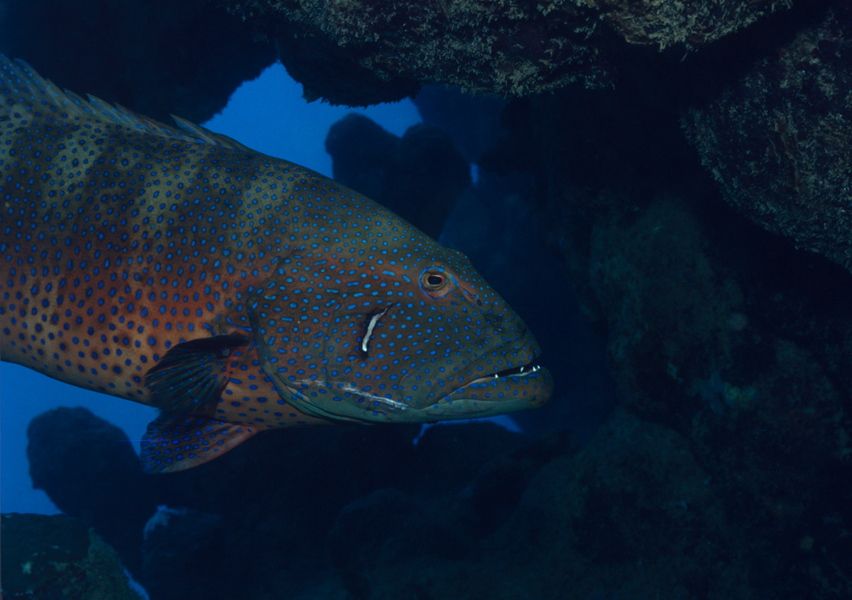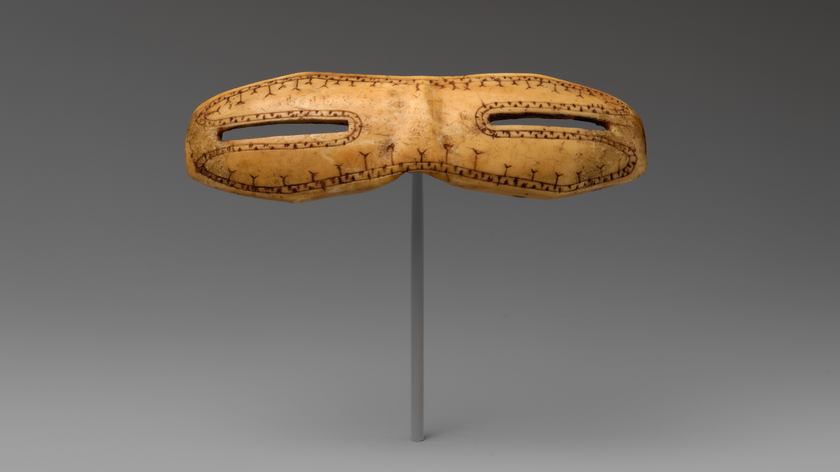Fish Use 'Sign Language' to Help Out Hunting Buddies

Two types of fish have been shown to use gestures, or sign language, to help one another hunt. This is the first time these types of gestures have been found to occur in animals other than primates and ravens.
Both types of fish, grouper and coral trout, are known for hunting cooperatively with other kinds of animals. Whereas the grouper hunts with giant moray eels and a fish called the Napoleon wrasse, coral trout partner up with octopuses to snag prey. A study published last week in the journal Nature Communications found that the fish are able to "point" their heads toward prey, to help out their hunting buddies.
After observing the fish in the wild for many hours, the researchers found that when a prey fish escaped its hunting party, a grouper occasionally moved over the place where the fugitive prey was hiding. The grouper would then rotate its body so that its head faced downward, and it would shake its head back and forth in the direction of the potential meal, in what researchers call a "headstand" signal. Coral trout make a similar sign, the researchers found. [Image Gallery: The Freakiest Fish]
Grouper partner with eel and wrasse, which live in the Red Sea and have complementary hunter-prey tactics: Grouper has "burst speed" in the open water, whereas giant moray eels can crawl into small holes, and wrasse have protracting jaws that can crush coral to get at prey, according to the study. Coral trout collaborate with octopuses, which are also better at fitting into tight spaces. This latter pair lives in Australia's Great Barrier Reef.
In the study, researchers recorded grouper doing the headstand signal 34 separate times; afterward, one of the predators caught the hidden fish on five occasions.
It is, of course, difficult to determine for sure that an animal's movement is truly this type of so-called "referential gesture" (or more loosely referred to as "sign language.") The researchers wrote that the headstand qualified as such because it fulfilled all of the generally accepted components of referential gestures: It was directed toward an object, not useful for any immediate mechanical purpose, aimed at a recipient, seemingly intentional and followed by a voluntary response from the fish's partner.
The results of the study suggest these fish may be smarter than previously thought. The findings may also show that this type of sign language doesn’t require a large brain, but rather arises out of necessity when it can help an animal survive in its environment.
Sign up for the Live Science daily newsletter now
Get the world’s most fascinating discoveries delivered straight to your inbox.
Email Douglas Main or follow him @Douglas_Main. Follow us @livescience, Facebook or Google+. Article originally on LiveScience.com.



